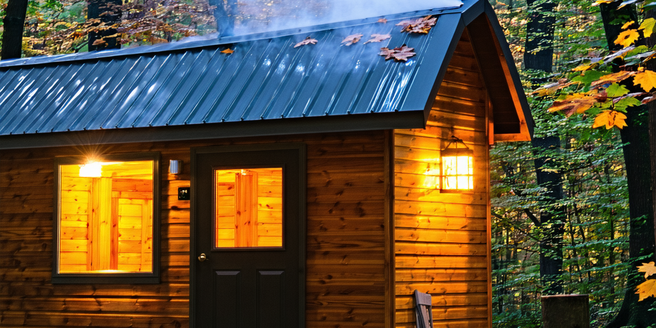Understanding the Tiny Homes Movement
The Tiny Homes Movement has gained momentum as more individuals seek simpler, more sustainable living. Originating in response to high housing costs and increased environmental consciousness, it promotes downsizing to homes typically under 400 square feet. This lifestyle shift offers benefits such as reduced living expenses, lower environmental impact, and a minimalist lifestyle focused on experiences rather than possessions. Enthusiasts are drawn to the freedom from mortgages and the ability to live more consciously. However, understanding the movement requires considering the trade-offs, such as limited space and the need for innovative storage solutions. The community-driven nature of this movement also fosters connectivity among supporters who value freedom and simplicity. As interest continues to grow, the movement reflects broader changes in how people consider their relationship with living space and the environment.
Advantages of Living in a Tiny Home
Living in a tiny home offers multiple advantages, making this housing trend attractive to many. The most significant benefit is the financial savings; tiny homes typically cost much less than conventional housing, decreasing both initial investment and ongoing expenses such as utilities and upkeep. They enable a debt-free lifestyle, often eliminating the need for a mortgage. Additionally, tiny homes encourage a minimalist approach, prompting inhabitants to prioritize essentials and experiences over material belongings, which can lead to a happier, less cluttered life. These small spaces also provide the flexibility to relocate easily and often come with environmentally friendly designs. By downsizing, tiny house dwellers reduce their carbon footprint, contributing positively to environmental sustainability. Thus, tiny homes represent a lifestyle shift towards financial freedom, simplicity, and eco-conscious living.
Challenges and Downsides of Tiny House Living
Tiny house living, while appealing for many reasons, comes with its share of challenges and downsides. One primary concern is the limited space, which might require significant lifestyle adjustments, particularly for storage and daily living activities. Privacy can also be compromised, as the small area offers little solitude from other inhabitants. Another challenge is the legality and zoning regulations, which can vary widely between regions and may restrict where tiny homes can be placed. Additionally, those living in tiny homes might struggle with essential utilities and amenities, as these require efficient, creative solutions. The social perception of tiny homes can also pose a barrier, with some viewing them as unconventional or impractical. Overall, while offering a unique approach to living, tiny house living necessitates careful consideration of these challenges.
Environmental Impact of Tiny Homes
Tiny homes present a compelling case for reducing environmental impact through a more sustainable lifestyle. These compact dwellings consume fewer materials and require less energy to build, diminishing their initial ecological footprint. During occupancy, tiny homes maintain energy efficiency with their small size, often incorporating renewable energy sources such as solar panels or composting toilets. This not only minimizes utility costs but also reduces reliance on non-renewable resources. Moreover, tiny homes encourage the use of eco-friendly materials and innovative design practices, further aligning with sustainable living. While the environmental benefits are clear, these homes still require consideration of resource management and potential impacts on local ecosystems. Nonetheless, by prioritizing minimalism and efficiency, tiny homes emerge as an attractive option for those seeking to lower their environmental impact.
Financial Considerations with Tiny Homes
Financial considerations are central to the appeal and practicality of the tiny home lifestyle. With traditional homes becoming increasingly expensive, tiny homes offer an alternative with significantly lower upfront costs. They often eliminate or drastically reduce mortgage debt, freeing up financial resources for other pursuits. Moreover, the maintenance and utility costs are generally minimal due to the reduced space and efficient design. However, it’s crucial to consider potential hidden costs, such as land purchase, building permits, and connecting to utilities. There may also be additional expenses for customizing the home to meet personal needs or local regulations. Ultimately, while tiny homes present an opportunity for significant savings, careful budgeting and financial planning are essential to fully realize the economic benefits they promise.
Legal and Zoning Issues for Tiny Homes
Navigating legal and zoning issues can be a significant hurdle for those considering living in a tiny home. Because tiny homes often fall outside the scope of traditional housing regulations, they can face legal challenges regarding their classification, which can affect where they can legally be placed or built. Zoning laws vary considerably across regions, with some areas having no provisions for tiny homes, while others implement stringent conditions. Additionally, classification debates—whether a tiny home is an RV, an accessory dwelling unit, or a primary residence—can impact legal residency rights. Prospective tiny home owners should conduct thorough research into local laws and seek expert legal advice to anticipate and navigate these complexities. Despite these barriers, the movement toward more inclusivity in housing regulations is gaining traction, promising more clarity for future tiny home enthusiasts.



